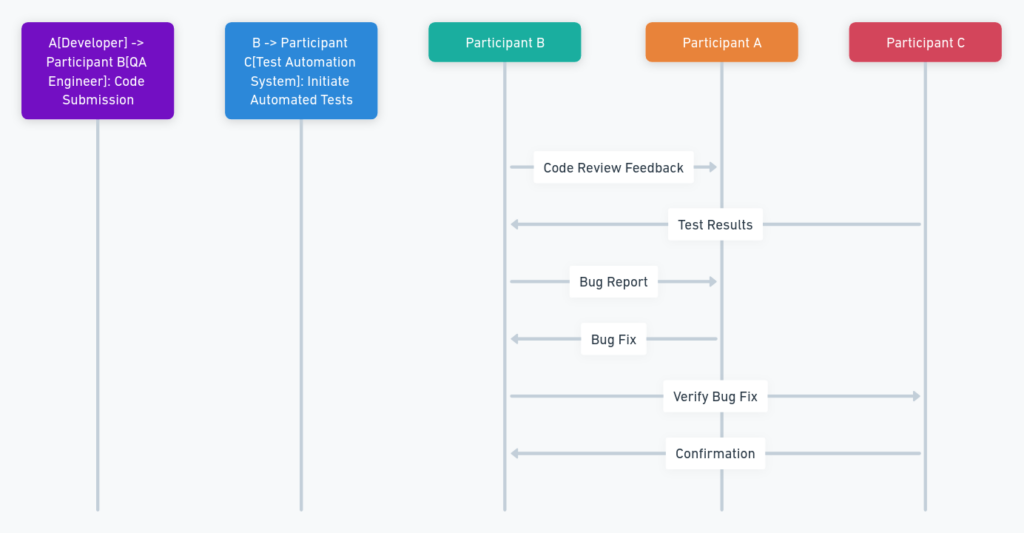Software bugs are an unavoidable part of software development. A software bug is any error, flaw, or fault in a computer program or system which causes it to produce unexpected or incorrect results or behave unexpectedly.
Repercussions from defects can range from minor interruptions to catastrophic, lasting failures with significant financial ramifications.
Notably, the true cost of bugs in software goes far beyond their immediate repair; this includes labor costs for developers as well as potential downtime and reputational damage as well as missed opportunities.
Being aware of their true economic impact is essential for businesses and developers striving to optimize operations and deliver flawless products.
Examining the Costs of Software Bugs
Direct Costs Associated with Bugs
Identification and correction of software bugs can incur substantial direct expenses. These costs are relatively easy to assess, such as development hours spent debugging code that pulls resources away from further development efforts.
As each bug becomes more serious, its costs increase proportionately - for instance:
- Developer Wages: Developers devote additional hours identifying and fixing bugs, which drives up labor costs.
- Tools and Technologies: In order to efficiently detect and repair bugs, specific tools and software may be required.
- Testing and Quality Assurance (QA): Once bugs have been corrected, products generally undergo further rigorous QA to make sure there have been no new issues that arise.
Costs Caused by Pests (Indirect Costs)
Direct costs associated with software defects can be substantial; however, their indirect effects are even harder to calculate and quantify.
Examples include:
- Customer Dissatisfaction: Bugs can lead to poor user experiences and lead to customer complaints that damage a company's reputation.
- Market Delays: Shipping delays caused by lengthy debugging processes may lead to missed market opportunities or breaches in compliance with contractual deadlines, potentially costing companies revenue opportunities and forcing them into breach of agreement agreements.
- Increased Support Costs: More bugs mean more customer support calls and higher support expenses.
- Decreased Productivity: Time spent fixing bugs can take away resources that would be better used on other projects or tasks, thereby diminishing overall productivity.
Factors Affecting Bug Costs
Costly bugs vary considerably based on various circumstances in which they appear; their consequences depend heavily on context.
- Bug Severity: Critical bugs that impact major functionalities or pose security vulnerabilities tend to be more costly to address than minor, non-impacting bugs.
- Stage of Discovery: Bugs discovered earlier in development are typically less costly to fix than those discovered later or post-product launch.
- Development Environment: The complexity of your development environment and programming languages used can also have a bearing on bug fixing costs. Complex environments tend to increase both the chances of bugs surfacing as well as their cost to fix.
Effective Solutions to Minimize Bug Costs

Importance of Code Reviews for Compliance Purposes
Code reviews are essential in improving code quality while mitigating potential bug-related costs. Peers examine code to detect issues early, before they escalate into costly and complex fixes later down the line.
A regular schedule of code reviews can lead to:
- Early Detection and Mitigation: Catching problematic code early is key to avoiding further issues from compounding over time.
- Knowledge Sharing: Code reviews help disseminate knowledge among team members and reduce mistakes and inconsistencies, leading to reduced errors and inconsistencies.
- Compliance With Coding Standards: Compliance with coding standards helps decrease the chances of bugs being introduced into software projects.
Automation Testing Tools
Integrating automated testing tools is another essential strategy to reduce the costs associated with bugs. Automation greatly enhances testing efficiency and coverage, enabling teams to:
- Automated tests are a quick, consistent way to detect bugs early and accurately, and can identify new vulnerabilities almost as soon as they emerge.
- Automating testing speeds up the testing process, freeing up developer time to focus on more pressing tasks.
- Automated tests offer improved accuracy by eliminating human error from manual testing processes.
Prioritizing Bug Fixes
Not all bugs are created equal, and prioritizing which bugs to address first can have a dramatic effect on development costs and product quality. Prioritization decisions should take into account factors like:
- Severity: Prioritize bugs that impact system stability or security as your first target.
- Frequency: Bugs that appear frequently and affect multiple users should receive high priority.
- User Impact: Take into account customer needs when prioritizing bugs that adversely impact user experience.
Prioritization allows teams to ensure resources are used wisely, targeting the most impactful issues first and preserving balance between development progress and quality assurance.
Examples of Bug Costs in Real Life Situations
Software bugs can have severe financial repercussions. Numerous instances have demonstrated the true cost of bugs in software development and stressed the necessity of effective debugging and quality assurance practices.
Mishap with Mars Climate Orbiter
NASA lost their Mars Climate Orbiter spacecraft, designed to study Martian atmosphere, due to a software bug where one engineering team used metric units while another employed English units for key spacecraft operations.
As a result, its entry into Martian atmosphere occurred earlier than planned, leading to disintegration at an unprecedented cost of $327 Million due to simple unit conversion errors.
Knight Capital Group's Trading Disaster
Knight Capital Group, a global financial services firm, experienced an alarming software bug in their automated trading system which caused massive financial loss of $440 Million within 45 minutes.
The software made millions of stocks buy and sell at incorrect prices which not only led to financial catastrophe, but also damaged investor confidence leading to a sharp drop in share price for Knight Capital Group.
In 1990, AT&T's long-distance telephone switching system crashed due to a software update that had not been thoroughly tested, causing a nine-hour outage that affected nearly 75 million calls and cost an estimated $60 million in direct financial losses alone - as well as damage to AT&T's reputation as an industry leader.
These examples illustrate the financial risks associated with software bugs, and demonstrate why rigorous testing and quality assurance processes throughout software development life cycles are necessary to avoid such costly errors.
Book a Demo and experience ContextQA testing tool in action with a complimentary, no-obligation session tailored to your business needs.
Conclusion
Software bugs can have significant costs for software development projects, not only directly but also long-term revenues and company reputation.
Prioritizing effective debugging strategies and preventive measures is vital in maintaining budget control and project timeline integrity, including rigorous testing protocols, developer training courses and advanced debugging tools to drastically decrease bug incidence and severity and thus contribute to more cost-effective and successful software development efforts.
Also Read - How important is visibility and traceability in QA?
